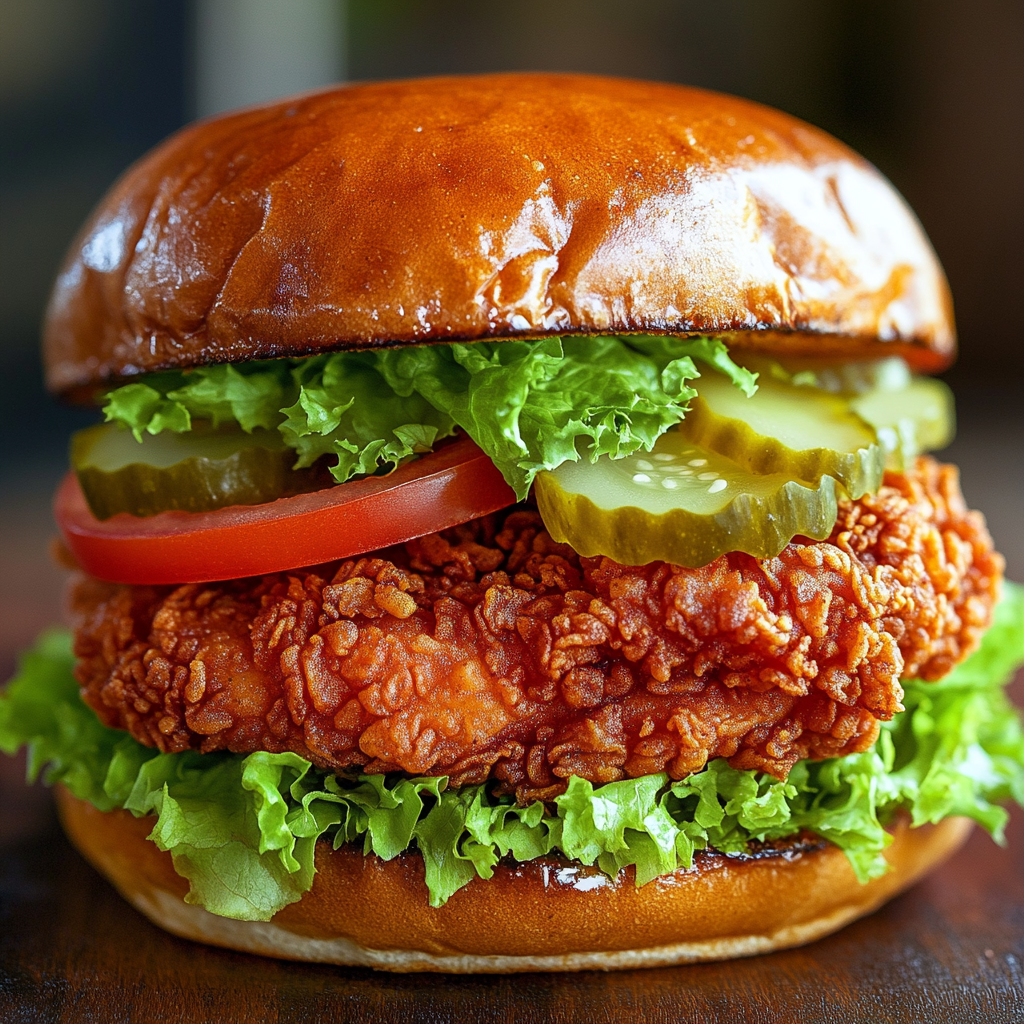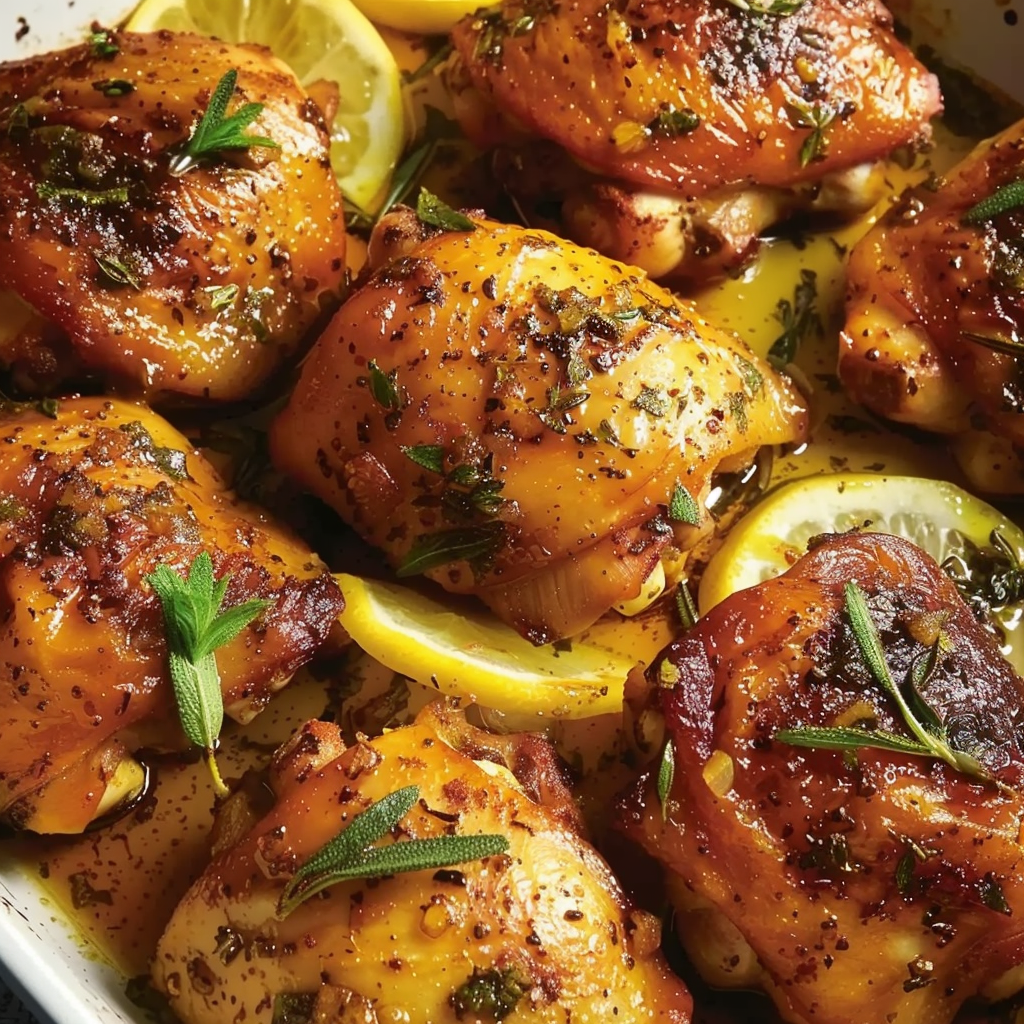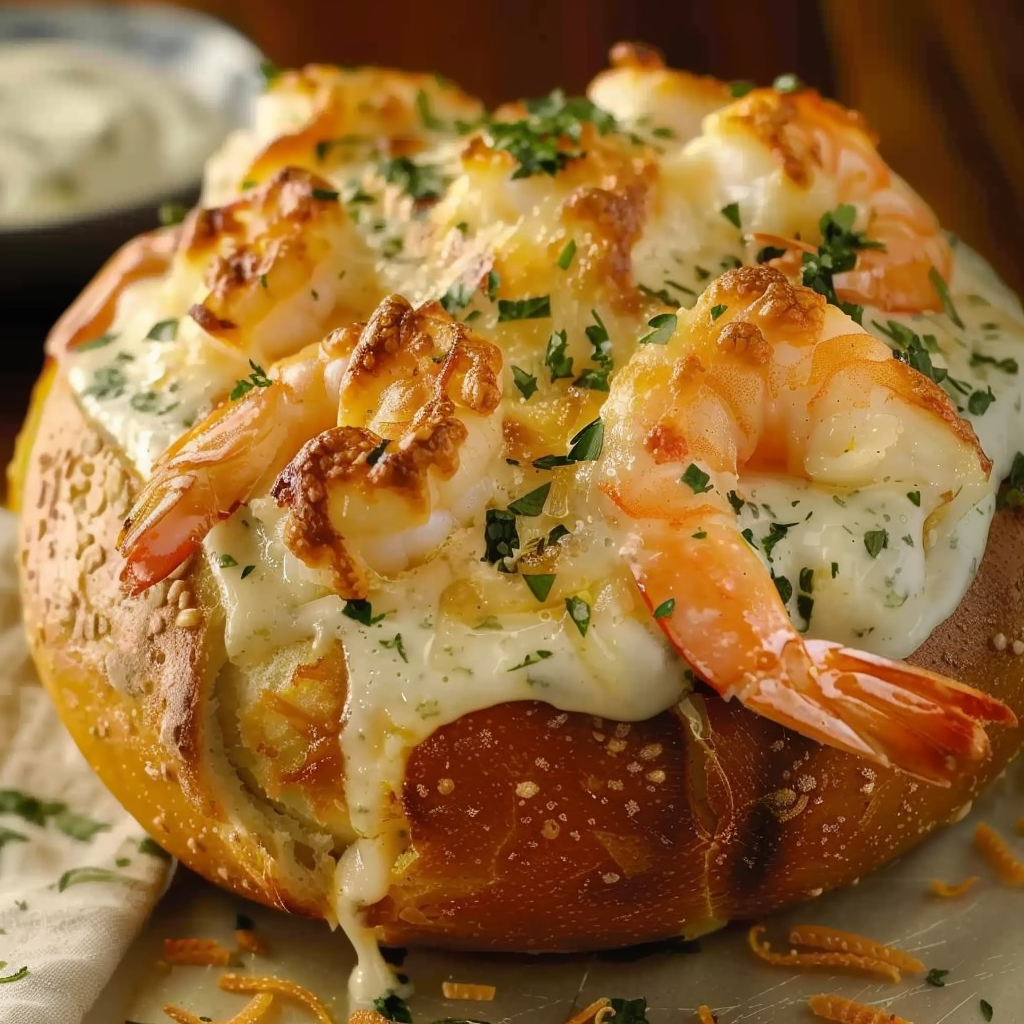The chicken sandwich has become a culinary sensation, especially with popular chains like Popeyes and Chick-fil-A, known for their crispy, flavorful offerings. These sandwiches have sparked viral debates about which one is the best, elevating the chicken sandwich to iconic status.
Benefits of Homemade Versions (Freshness, Control over Ingredients):
Homemade chicken sandwiches offer control over freshness and ingredient quality, allowing for healthier choices and creative customizations to match personal taste preferences.
Why This Recipe Stands Out
Unique Techniques (Marinade, Double Dredging for Extra Crispiness):
This recipe uses a flavorful marinade to tenderize the chicken and the technique of double dredging, which ensures an extra crispy coating, making it stand out from fast food options.
Recipe’s Versatility and Ability to Scale for Crowds:
The recipe is versatile, allowing for various toppings and sauces, and can easily be scaled up for parties or family gatherings, making it ideal for different occasions.
Key Ingredients and Their Roles
Chicken
Importance of Using Boneless, Skinless Chicken Breasts:
Boneless, skinless chicken breasts are the preferred choice for this sandwich due to their lean and tender texture, which allows for even frying and easier handling. They also provide a neutral flavor base, ideal for absorbing marinades.
Alternatives (Chicken Thighs and Their Cooking Considerations):
Chicken thighs, while fattier and more flavorful, can be used as an alternative. They may require slightly longer cooking time and can yield a juicier sandwich, but their uneven shape may make frying a bit trickier.
Marinade Ingredients
Role of Buttermilk (Tenderizing the Meat):
Buttermilk is a key component in the marinade as it breaks down proteins in the chicken, making it more tender and helping the breading stick better during frying.
Hot Sauce’s Contribution to Flavor:
Adding hot sauce to the marinade infuses a subtle, tangy heat into the chicken, adding layers of flavor without being overpowering. It can be adjusted for personal spice preference.
Breading Ingredients
Flour Mixture’s Impact on Texture:
The flour mixture creates the crispy coating on the chicken. A proper flour blend is essential for achieving the signature crunch, and adjusting it with cornstarch or baking powder can elevate the texture further.
Importance of Seasoning (Paprika, Garlic, Onion Powder):
Seasoning the flour with paprika, garlic powder, and onion powder ensures that the crispy coating is flavorful. These spices give the breading a savory depth, balancing the richness of the fried chicken.
Step-by-Step Cooking Process
Preparing the Chicken
Proper Pounding of Chicken for Even Cooking:
Pound the chicken breasts to an even thickness for uniform cooking. This ensures that the chicken cooks evenly and helps avoid dry or undercooked sections.
Marinating Process: Duration and Its Effect on Tenderness:
Marinate the chicken in a buttermilk and hot sauce mixture for at least 30 minutes or up to 24 hours. The longer the chicken marinates, the more tender and flavorful it becomes, as the buttermilk tenderizes the meat while the hot sauce adds flavor.
Breading Process
Dredging Technique: Ensuring the Right Texture for Crispy Coating:
Dredge the marinated chicken in a seasoned flour mixture, ensuring each piece is evenly coated. Press the flour onto the chicken for a more robust, crispy layer.
Double-Dipping Technique for Extra Crunch:
For extra crunch, double dip the chicken. After the first dredge, return the chicken to the buttermilk marinade and then dredge it again in the flour mixture. This creates a thicker, crunchier crust once fried.

Frying Techniques
Best Oil Options for Frying (Temperature Control and Oil Types):
Use oils with high smoke points, such as vegetable oil, peanut oil, or canola oil. Heat the oil to around 350°F (175°C) to ensure the chicken fries evenly and crisply without absorbing too much oil.
Tips to Avoid Common Mistakes (Overcrowding, Wrong Oil Temperature):
Avoid overcrowding the pan, as it lowers the oil temperature, leading to greasy chicken. Use a thermometer to maintain a consistent frying temperature. If the oil is too hot, the coating will burn before the chicken cooks through; if it’s too cold, the chicken will be greasy and soggy.
Resting and Assembling the Sandwich
Proper Resting Techniques for Maintaining Crispiness:
Once fried, place the chicken on a wire rack rather than paper towels to let excess oil drain. This helps maintain the crispiness of the chicken by preventing the coating from becoming soggy.
Assembling with Toasted Buns and Topping Options:
Toast the buns to prevent them from becoming soggy when paired with the fried chicken. Assemble the sandwich with classic toppings like lettuce, tomato, and pickles, or experiment with additions like coleslaw, cheese, or specialty sauces for extra flavor and texture.
Pro Tips for Success
Marinating Tips
Duration Tips for Best Results:
For optimal flavor and tenderness, marinate the chicken for a minimum of 30 minutes, but ideally up to 24 hours. The longer the chicken sits in the marinade, the more tender and flavorful it will be.
Substitutes If Buttermilk Isn’t Available:
If you don’t have buttermilk, you can substitute with a mixture of regular milk and a tablespoon of lemon juice or vinegar. Let it sit for 5-10 minutes to mimic the acidity and tang of buttermilk.
Breading and Frying Tips
Ensuring Crispy, Shaggy Crust (Double-Dip Technique):
For a crispy and textured coating, use the double-dip technique: dredge the chicken in flour, dip it back into the marinade, and then dredge it again in flour. This ensures an extra crunchy, shaggy exterior.
Monitoring Oil Temperature and Handling Oil Safety:
Maintaining a steady oil temperature of 350°F (175°C) is crucial for proper frying. Use a thermometer to check the oil temperature, and be mindful not to overcrowd the pan, which can lower the temperature and lead to greasy chicken. Always handle hot oil with care, ensuring the cooking area is clear of moisture to prevent splattering.
Toppings and Customizations
Classic Toppings
The classic chicken sandwich toppings include crisp lettuce, juicy tomato slices, crunchy pickles, and a generous spread of mayonnaise. Bun selection is also important, with brioche buns often favored for their soft, slightly sweet flavor that complements the savory chicken.
Creative Twists
For a twist, try using coleslaw as a topping for added crunch and tang. You can also customize the sandwich with melted cheese like cheddar or pepper jack, or experiment with flavored sauces such as ranch, spicy mayo, or fry sauce for a unique flavor profile.
Nutritional Information and Health Considerations
Caloric Breakdown
A typical fried chicken sandwich contains approximately 600-800 calories per serving, depending on the size and toppings. It generally includes about 30-40 grams of fat, 50-60 grams of carbohydrates, and 25-30 grams of protein, making it a filling but calorie-dense option.
Healthier Alternatives
For a lighter version, consider using a lighter oil like avocado oil, which has healthy fats, or opt for grilling instead of frying to reduce fat content. Grilling also lowers overall calories while still providing flavor.
FAQ Section and Variations
Can You Use Chicken Thighs?
Yes, chicken thighs can be used. They are juicier due to their higher fat content. Adjust the cooking time slightly, as thighs may take a few extra minutes to cook compared to breasts. Ensure they reach an internal temperature of 165°F.
Can You Bake or Air Fry the Chicken?
Yes, baking at 400°F for 20-25 minutes or air frying at 375°F for 15-18 minutes are healthier alternatives. Flip halfway through for even cooking and crispiness.
How to Reheat Leftovers
To maintain crispiness, reheat fried chicken in an oven at 350°F for 10-15 minutes or use an air fryer for 5-7 minutes. Avoid microwaving as it can make the breading soggy.
What Oils Are Best for Frying?
Peanut, canola, or vegetable oil are best due to their high smoke points (around 400-450°F), ensuring safe and effective frying without burning the coating.
Conclusion
Homemade chicken sandwiches offer unbeatable freshness, flavor control, and customization options that rival fast food favorites. The versatility of this recipe allows for endless creativity, from experimenting with toppings and sauces to using different cuts of chicken or cooking methods like baking and air frying. Whether you’re making a classic sandwich or putting your own twist on it, this recipe ensures a delicious, crispy result. Embrace the flexibility and explore new variations to make your perfect chicken sandwich.
Print
Crispy Chicken Sandwich
Description
- This crispy chicken sandwich recipe features tender, marinated chicken breasts coated in a seasoned flour mixture and fried to perfection. Paired with toasted buns and classic toppings like lettuce, tomato, and pickles, it offers a satisfying crunch with every bite. The double-dipping technique ensures extra crispiness, making it a standout dish for any occasion.
Ingredients
Chicken Marinade:
- 3 medium chicken breasts, boneless, skinless, halved into 6 cutlets
- 1 1/2 cups low-fat buttermilk
- 1 Tbsp hot sauce, (we use Frank’s Red Hot brand)
- 1 tsp salt
- 1 tsp black pepper
- 1 tsp onion powder
- 1 tsp garlic powder
Classic Breading for Fried Chicken:
- 1 1/2 cups all-purpose flour
- 2 tsp salt
- 1 tsp black pepper, freshly ground
- 1 tsp baking powder
- 1 tsp paprika
- 1 tsp onion powder
- 1 tsp garlic powder
- Oil for frying – vegetable oil, canola oil or peanut oil
Toppings for Chicken Sandwiches:
- 6 burger buns, buttered and toasted
- 6 green lettuce leaves
- 1 large tomato, sliced
- 2 dill pickles, sliced into rings
- Mayonnaise, or your favorite sauce
Instructions
-
Pound chicken cutlets between 2 sheets of plastic wrap and pound to an even 1/2” thickness so they cook more evenly.
-
In a large mixing bowl, whisk together marinade ingredients. Add Chicken, turning to coat then cover and refrigerate for 2-4 hours or overnight.
-
In a separate shallow bowl, whisk together breading ingredients: flour, salt, pepper, baking powder, paprika, onion powder and garlic powder. Remove a piece of chicken from the marinade, letting excess drip off and dip chicken into flour mixture, pressing it on with your hands to coat well. Transfer to a wire rack.
-
Heat 1 ” oil in a soup pot or dutch oven to 350˚F. Just before frying chicken, dip it into the seasoned flour again for a thick and shaggy exterior.Add chicken, 2 pieces at a time for a smaller pot so you don’t crowd and reduce the temperature of the oil too quickly.
-
Place chicken into the oil one by one. Adjust the flame to keep the oil temperature at 300-325˚F. Cook 3-4 minutes on the first side or until browned and crisp then flip and cook another 2-3 minutes on the second side or until cooked through and chicken is browned and crisp all over.
-
Transfer to a wire rack set over a baking sheet. The internal temperature will continue to rise as it rests. The final resting temperature of the chicken should reach 165˚F.
-
Lightly butter and toast the cut sides of your buns and build your crispy chicken sandwiches with desired toppings.
Notes
For best results, marinate the chicken for at least 30 minutes. Adjust the spice level in the marinade by adding more or less hot sauce according to your preference.









